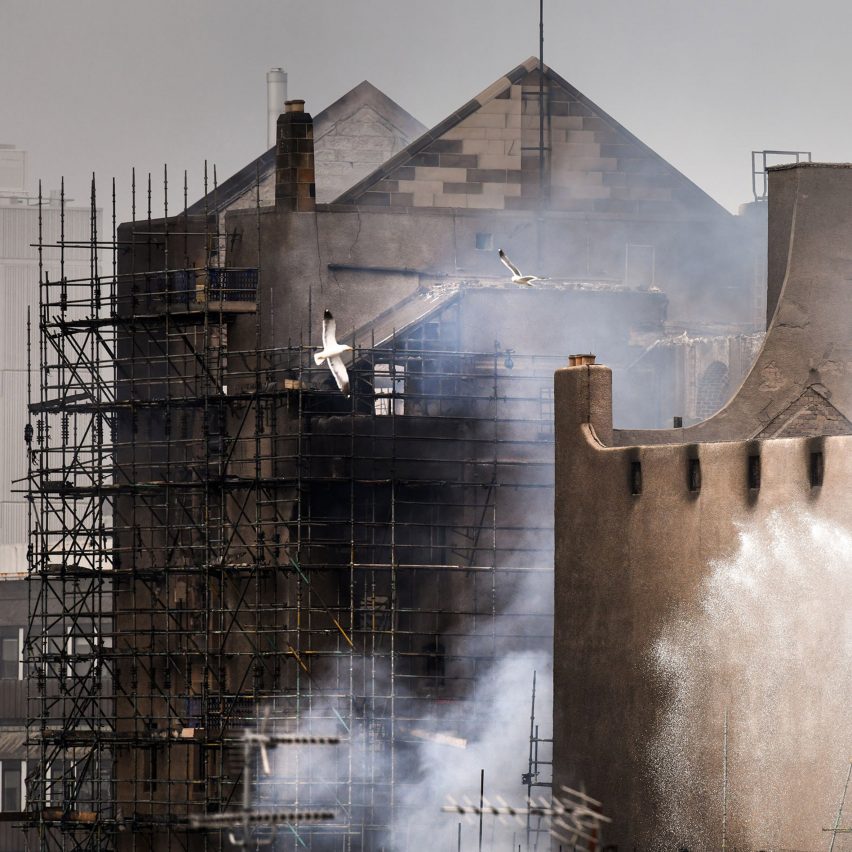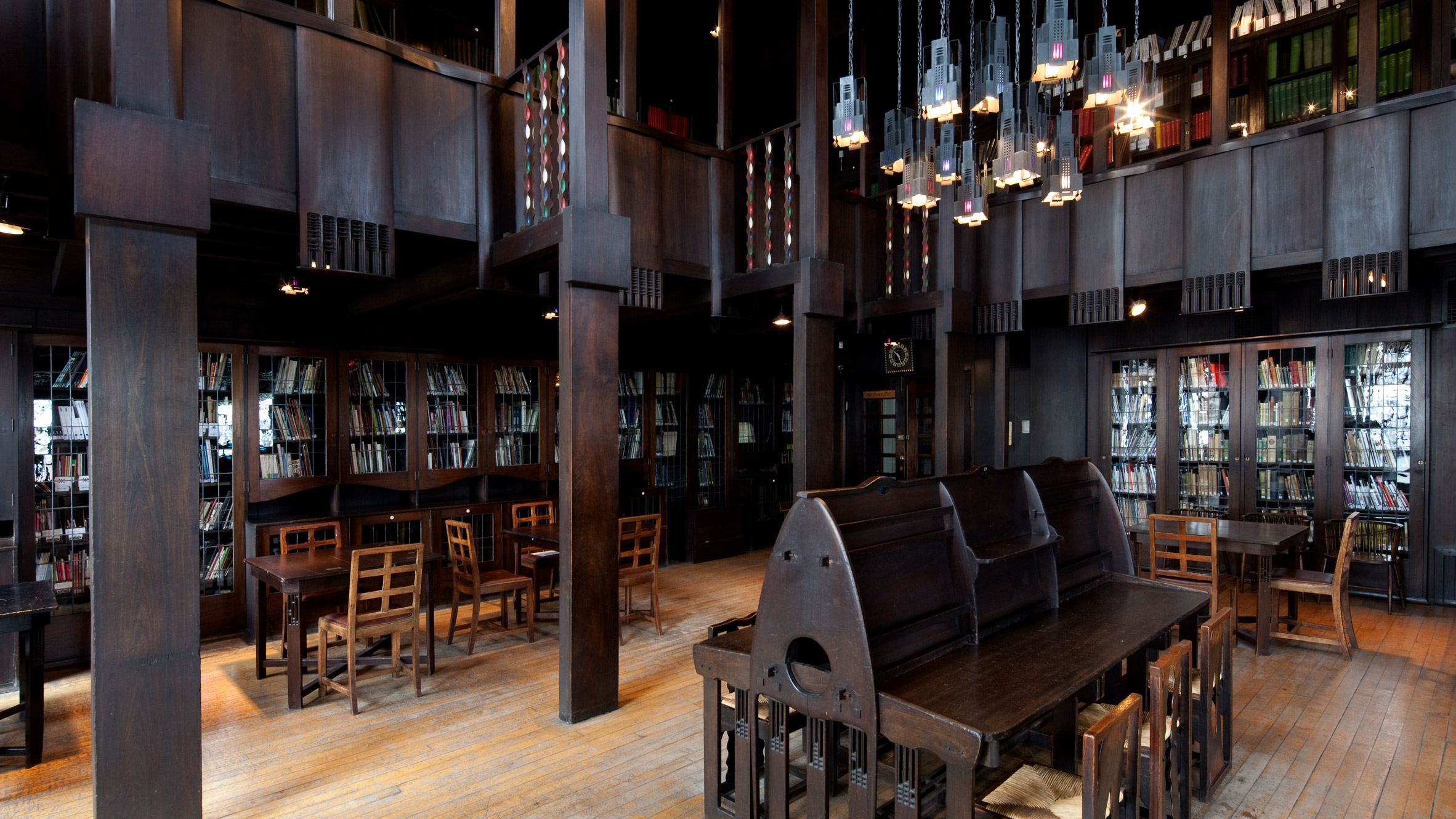
An inquiry into the cause of the fire that destroyed the Glasgow School of Art's Charles Rennie Mackintosh-designed building in 2018 has failed to reach a conclusion due to insufficient evidence.
Carried out by the Scottish Fire and Rescue Service (SFRS) over three years, the report issued yesterday records the exact cause of the fire as "undetermined".
According to the SFRS, this is the result of the extensive damage to the site caused by the fire, and in turn, the loss of potentially vital evidence.
"We were unable to find sufficient evidence to support any credible origin and it has not been possible to establish a definitive cause," concluded SFRS deputy chief officer Ross Haggart.
"Unfortunately, almost everything within the building was severely damaged or consumed in the fire and that included any potential items of evidence that could have provided those answers."
"Hundreds of tonnes" of evidence examined
The Charles Rennie Mackintosh building fire took place on 15 June, as the restoration of the building following an earlier fire in 2014 neared completion.
In the report, it is revealed that fifty per cent of the building was alight within 38 minutes of the firefighters arriving at the site.

More than 120 firefighters were needed to extinguish the blaze, with their operations continuing for 10 days after. There were no casualties.
The investigation into the fire, which concluded on 30 September 2021, involved the physical examination of "hundreds of tonnes of fire-damaged debris", according to the SFRS.
Analysis of witness testimonies, CCTV and photographic footage was also involved.
Fire likely to have started on fourth floor
Though the cause of the fire was inconclusive, the SFRS report found that the fire is likely to have started on the building's east side, on or above its fourth floor.
It added that the "uncontrolled fire growth and rapid development" was believed to have been exacerbated by the restoration works and an unlimited air supply fed through a duct system.
"Due to the nature of the ongoing restoration and construction works combined with other factors such as the air supply into the building, the fire was unfortunately able to take hold, spread and ultimately cause catastrophic damage," explained Haggart.
The report adds that the initial observations of the building's exterior following the fire found a "failure of approximately 97 per cent of the windows, severe spalling of the sandstone outer facade, warping of steel beams and severe fire and heat damage to the scaffolding structure that encased the building".
Its roof structure had also perished, alongside the interior timber flooring and ceilings, with just stone, brick and steel structural members remaining.
Architect Steven Holl's extension to the school was also damaged in the event. The building's rain shield sustained heat damage and required replacing.
"We will rebuild"
In 2019, The Times reported that a high-pressure mist suppression system, which was almost completely installed at the Charles Rennie Mackintosh-designed building, survived the smaller fire in 2014 "largely intact" and "would have saved" it if it had not been removed.
These claims were rebuffed by the Glasgow School of Art, which claimed the fire in 2014 meant "considerable elements of the system were destroyed or damaged" and left it "unusable".
Glasgow School of Art was completed in 1909 and is the best-known building designed by Mackintosh, Scotland's most famous architect.
Shortly after the blaze, the director of the Glasgow School of Art Tom Inns said that it will be rebuilt.
"It is as vital a part of the Glasgow School of Art's future as it has been for the last 100 years," Inns told Dezeen. "We will rebuild so that 'the Mack' can continue to provide creative inspiration to students, staff and visitors."
The main image is by Jeff J Mitchell.
The post Investigation into Glasgow School of Art fire fails to find "definitive cause" appeared first on Dezeen.
from Dezeen https://ift.tt/3ICa5gi
No comments:
Post a Comment